❝The Black Sun in Mesoamerican mythology has many mystical meanings, among them it is connected to the god Quetzalcoatl and his penetration in the underworld❞
They do not pretend to account for the cause of eclipses, but they believe them to be certain precursors of war. Eclipses are called Mukutaa wee thee, Keesohtoa- or Black, Sun. - Shawnese Traditions: C. C. Trowbridge
Mukutaaweethee Keesohtoa, the “Black Sun,” which portends war? How does the sun “go black” in daylight hours? We, of the modern world have our explanations, those people of the past who witnessed that same celestial event had theirs…
The Codex Borgia is one of the most important surviving pre-Columbian manuscripts from Mexico. The Codex Borgia depicts Quetzalcoatl attacking the Sun during an eclipse
While many were happy with Quetzalcoatl’s reign, his rival Tezcatlipoca was not and plotted to bring him low. One night, Tezcatlipoca plied Topilitzin-Quetzalcoatl with pulque (an alcohol made from agave); afterwards, the drunken ruler slept with his celibate priestess sister. Ashamed of what he had done, Topilitzin-Quetzalcoatl departed Tula and set out for the sea.
It is uncertain what happened next. Some versions held that Quetzalcoatl cremated himself; others stated that he spent eight days in the underworld before reemerging as Venus or the morning star. Yet another version of this tale had Quetzalcoatl parting the sea and leading his followers in a march along the ocean floor. This version’s blatant mirroring of the story of Moses was almost certainly a product of later Spanish influence.[
The BLACK SUN event of course was that which occurred in 1806; as we discussed in the previous episodes, his correct ‘prediction’ of the total eclipse of June that year made Tecumseh’s brother - the Shawnee Prophet - famous indeed among the tribes of the midwest.
Five years later, war drums were beating, and the last chance to arrange for a harmonious relationship between the red & white men had been squandered by the bad faith dealings of those who made ‘treaties’ only as a vehicle for surreptitious agendas.
In the Borgia Codex mentioned above, Quetzalcoatl is seen ‘attacking’ the sun… like Venus was noticed in the sky during the full eclipse. Exactly WHO Quetzalcoatl might have actually been will play into our storyline later one. For now, let’s just keep in mind that the “mythologies” recording significant celestial events going back the longest time have proven to show amazing concordance between the cultures recording them. From China through the south of Asia, to the Mesopotamian - Mediterranean cultures we know the best, the scholars now interpreting the graphic and textual records are able to see among those vastly different ‘stories’ a single thread of recorded - ACCURATELY recorded - cosmic developments that impacted the earth and the people who lived upon it.
Just like Montezuma falsely supposed that the conquistador Cortes was an avatar of QUETZALCOATL returned to bring knowledge and happiness to his folk, so many have mistakenly supposed the tiny terror state in the middle east to have antecedents in a powerful supernal force which works with beneficence for all mankind. Montezuma mistake proved a fatal on. Any bets on the present day one?
“The Shawnee at Greenville abandoned their bark wigwams in the spring of 1808, and Tecumseh, his brother, and their followers headed west, some on horseback, and some in newly-constructed canoes. They settled at a scenic spot along the Wabash River, three miles below where the Tippecanoe River joined it.
Here the forests were still intact, and there was abundant wildlife and good fishing in the rivers. The Miami tribe had named the area Kethtippecanoogi, “place of the succor fish people,” which had been anglicized to Tippecanoe.
A new village of two hundred bark houses appeared on a bank of the Wabash. A large council lodge was built, plus a medicine lodge and large building named House of the Stranger. It would accommodate pilgrims who came to meet and hear the Prophet. Fields cultivated for corn, pumpkin, and squash stretched out beyond the village. It was known to the whites as Prophetstown.
There was no chance that Harrison could have been there because he was at Fort Wayne, in the northern Indiana Territory, busily working against the interest of the Indians. He was negotiating a treaty to take roughly three million acres of land, much of it along the Wabash, for less than two cents an acre. Harrison needed more Indian land to complete Indiana’s march to statehood. In the spring of 1809, Indiana Territory had been divided to create Illinois Territory, from which the states of Wisconsin and Illinois would eventually be created. However, the splitting off had lessened the Indiana Territory and population was one of main criteria for statehood. More land, more settlers, then statehood.” -from Sugden: Tecumseh - A Life
The treaty negotiations had been approved by lames Madison, the new U.S. president. But he had set conditions, the most important being that all Indians with claim or pretended claim to the land were present, and that the treaty did not excite any Indians or cause any undesirable effects. For some reason, Harrison felt he did not have to obey the president of the United States and entered into a shameful negotiation at Fort Wayne.
He packed the meetings with half-starved Indians who needed more annuities, and excluded some Indians who had claim to the land. The Treaty of Fort Wayne was signed September 30, 1809. It was so blatantly unjust that it upset Indians who had been friendly to the Americans. Even some Americans saw the treaty as unjust, and they feared it could push the Indians into the arms of the British if war broke out again. It enraged Tecumseh, but it was a complete vindication of his efforts to halt American expansion.
If Harrison could have known the effects of the treaty on Tecumseh, he might have reconsidered it. Tecumseh now knew there was no dealing with the Americans. Words would not stop them; only the musket ball and war club would.
This brother is really the efficient man — the Moses of the family ... He is described by allas a bold, active, sensible man, daring in the extreme, and capable of any undertaking.
As usual, Indian superstitions played a role in the recruitment campaign. Early in 1811, a gigantic comet brightened the skies over parts of Europe. By summer it glowed on the edge of the North American night skies. In October, while Tecumseh visited the Creeks, it was bright enough to create a glow over the forests at night. Tecumseh pointed to it as an omen boding ill for his enemies.
The comet appeared over Creek country as Tecumseh arrived, and faded when he departed. The Creeks considered this, and the name Tecumseh, which to them meant Shooting Star. There was only one conclusion: this was indeed a powerful man blessed by the spirits.
When Tecumseh left the south to return home, there was another important sign. December 16, 1811, the New Madrid earthquakes shook Arkansas and Missouri. They were so strong that they rang steeple bells in Charleston, South Carolina. Stories developed that Tecumseh, before leaving the southern tribes, had said that he would stamp his feet or clap his hands and make the earth shake” - from Sugden: Tecumseh - A Life

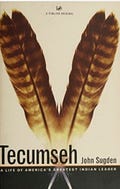

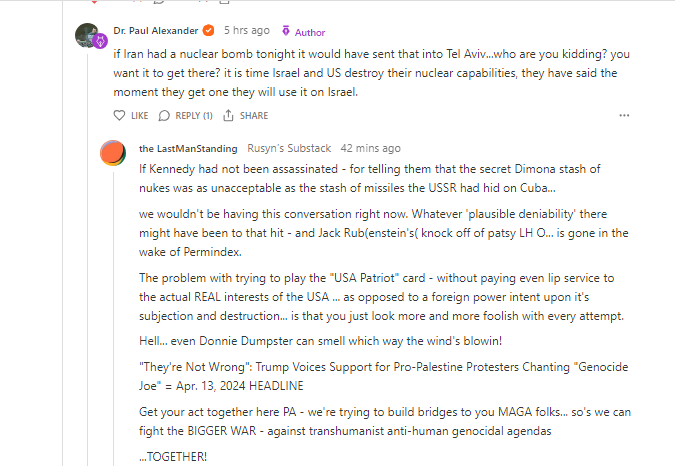
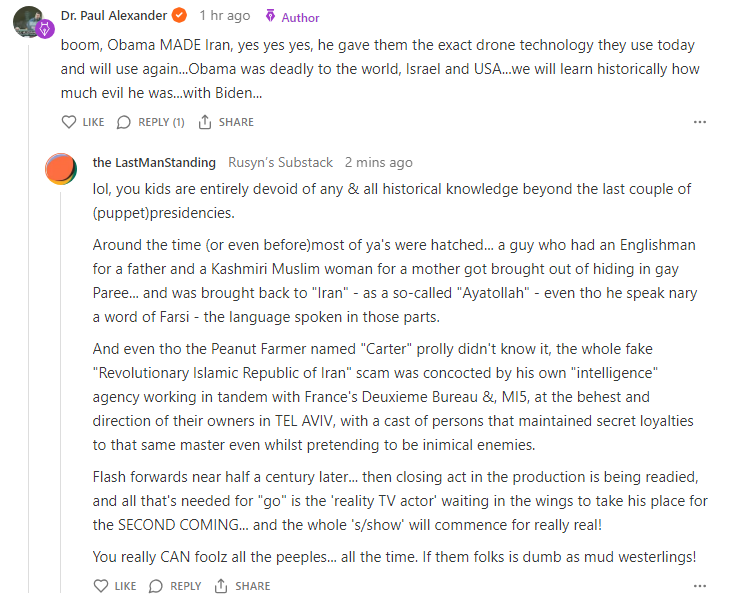
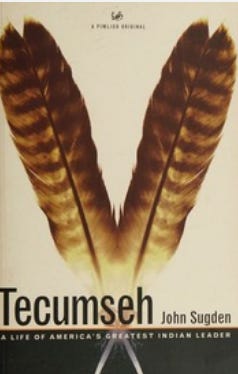



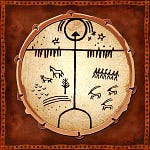
BLACK SUN